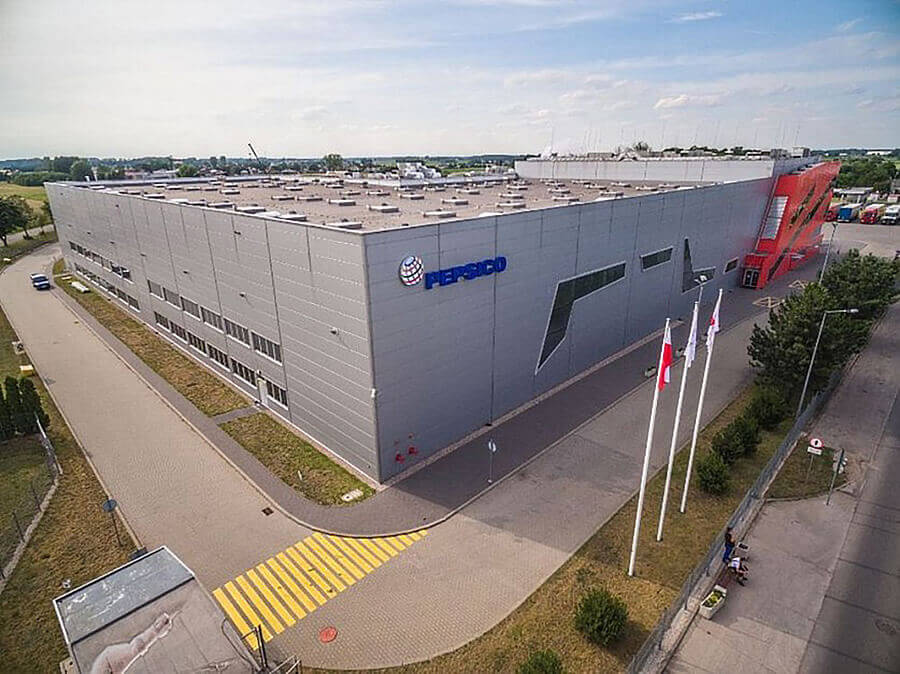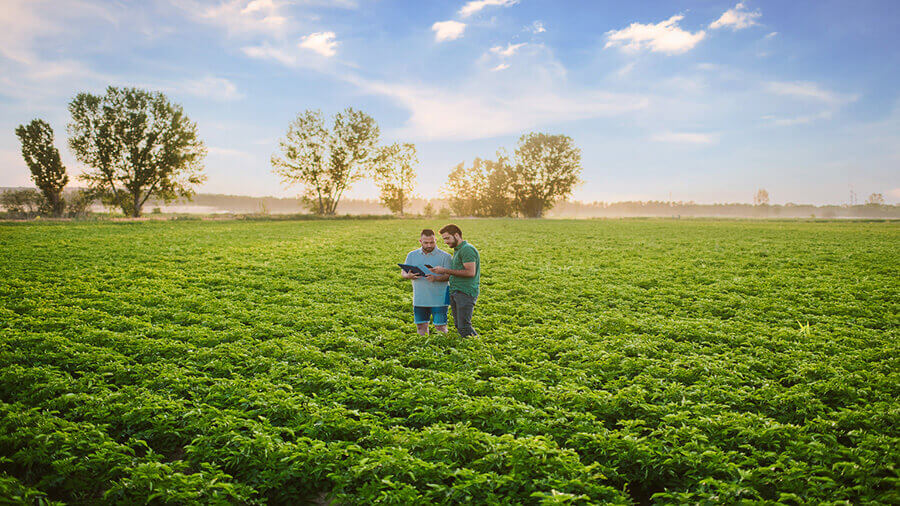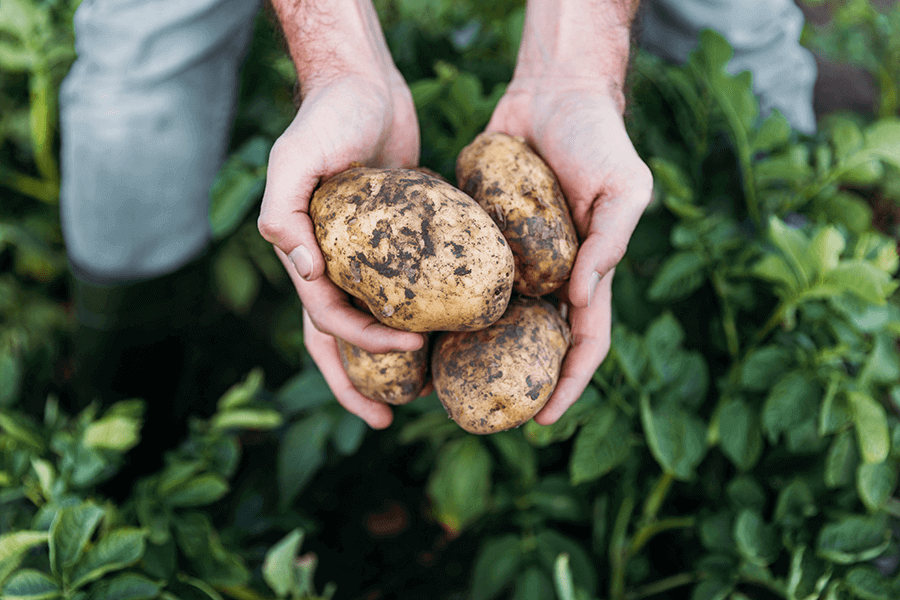Leszek Kiełtyka, Director of the Raw Material Purchase Department at Crisp Malt, which has a malt house in Bydgoszcz, which cooperates with farmers from all over Poland, tells us about the specifics of cereal cultivation for malting and brewing beer.

What grains are grown for malting?
In Polish conditions, two-row spring malting barley varieties are mainly used for malting purposes. Malting barley constitutes between 8 and 10% of the total amount of barley cultivated in our country.
The varieties we introduce to the market are selected based on the recommendations of breeders and malt recipients, after positive field and production tests conducted by our contracting department based on the variety selection system of Crisp Malt. These varieties are bred to obtain quality features useful for malting, such as grain accuracy, grain uniformity, yield, low protein content. They are subject to a series of field tests and micro-malting in special breeders programs and brewing institutes, e.g. Berliner Programm organized by the VLB Berlin Institute.
In addition, our malt house in Bydgoszcz deals with the production of wheat malt, for this purpose low-protein wheat is grown, which we also contract. Wheat malt is offered for the production of renowned wheat beers.
What is important when growing cereals for malting?
Growing barley for malting purposes does not have to be difficult and we always emphasize this. The desire to produce good quality grain is very important. It consists of a few simple principles – such as the selection of varieties that, thanks to breeding work, do not yield worse than fodder varieties, it is important that the soil is in good condition, the early sowing date is observed, protection against pests is carried out (not forgetting about the protection of ears) and the proper harvest dates and grain storage principles have been observed. Basically, the cultivation of malting barley differs from other crops by nitrogen fertilization. The doses of nitrogen itself, the forms used and the dates of fertilization are significant here.
A lot also depends on the farm’s capabilities, climatic and soil conditions. The right approach to the selection of soils on which barley will be grown is important. Assuming high yields, it is worth looking at the location of the crop – according to Dr. Jerzy Próchnicki, these should be soils recommended for wheat or rye, well cultivated, sandy-loamy, loamy or loess type, or having at least a more compact subsoil.

When is malting barley sown and harvested?
In our country, spring barley is mainly used for malting purposes. In Poland, the sowing date is from February to the 3rd decade of March. It is important to sow barley as early as possible in given climatic and soil conditions. I am tempted to say that the date of sowing is the most important element determining quality and yield in the cultivation of spring malting barley. That is why our field advisors and farmers are constantly on-call to choose the optimal sowing date in spring, monitoring soil moisture and following weather forecasts. All this is done to ensure that the farmer who has the best knowledge about their farm capabilities would sow barley in the optimal time window.
Barley for malting purposes is harvested at full maturity; many producers, based on their own experience, recommend that this harvest should take place up to 7 days after reaching this maturity. At this time it is easier to be harvested, threshing is more thorough, the grain is less sensitive to damage and infestation with mold fungi is avoided. Extending this period results in deterioration of grain quality.
After harvesting the barley should go to a properly prepared warehouse – dry, free from leaks, water seeps and storage pests. Barley harvested for malting purposes must be dry, because maintaining its humidity below 13.5% facilitates its proper storage.
Is the barley from which you produce malt grown in Poland?
Yes, cereals for malt that come to us are actually grown throughout the entire country. Our field advisors offer cultivation contracts to farmers in the following regions: Lower Silesia, region of Opole, Subcarpathia, region of Lublin, Kuyavia, West Pomeranian and Pomeranian and Warmian-Masurian. Therefore, we cooperate with many farms, and the area diversity is very large. These are farmers who know their profession well, invest in the modernization of applied solutions and are willing to expand their knowledge. Barley suppliers are mainly commercial farms, most often specialized in the production of cereals which have storage facilities that allows barley to be stored in such a way that there is no doubt that it is malting barley of a given variety. Of course, this does not preclude growing barley by farms with smaller acreage.

How do you support your suppliers?
We prefer contracting as the main basis for obtaining raw material for our malt house. We believe that contracting engages the parties in the striving to produce good quality raw material. The group of field advisors who visit producers are people with extensive agrotechnical knowledge who are familiar with agriculture. This is the crew that supports the producer from sowing to delivery to the malt house. Advisors visit barley producers, each of them inspects the plantations together with the farm’s agronomist, inspecting and assessing them. Our advisors hold several hundred joint meetings like these per season. We have developed a system of selection of varieties and their regionalization based on cooperation with farmers. Suppliers are also helpful in creating contracting offers. We see that we can still gather valuable experience, which is the fruit of our cooperation with farmers. Each link in this sustainable chain is important to us, and farms are the place where this whole chain of complicated dependencies begins.
At the same time, we are constantly striving to increase the share of barley from sustainable sources. These are the expectations of malt recipients and beer consumers today. Our advisors are equipped with the knowledge necessary to carry out a farm sustainability assessment with the farmer on the basis of the FSA list (Farm Sustainability Assessment). Our farm sustainability assessments are optimistic. A large share of suppliers at all levels of certification confirms that this is the right direction, important also for agricultural producers. Which makes us very happy.
How is malt formed?
Malt is made by germinating grains under controlled conditions to produce the appropriate enzymes and change their structure, and then they are dried to preserve the product. After cleaning the grain from field impurities, it is soaked, the purpose of which is to quickly increase the humidity, which enables the beginning of germination. The process continues in the so-called Saladin boxes, where the grain produces rootlets and a cotyledonous sprout, the structure of the grain is loosened and enzymes are formed. The process is interrupted in the dryer by intensive evaporation of water from the grain at low air temperatures. After the drying process, the malt is subjected to the separation of roots, which are a valuable fodder product.
Our malt house in Bydgoszcz is a plant established in the late 1960s, thoroughly modernized in 2008-2010, processing over 100,000 tons of grain annually.

Who are the recipients of your malt?
The beer market in Poland is highly consolidated. Although we currently have more than 250 active breweries, more than 90% of beer volume is brewed in several industrial breweries and these industrial breweries are our main customers. In Poland, we do not have any installations for roasting or smoking malts, which is why we mainly supply pale malts to the market, the so-called Pilsner or pale ale and those with a slightly darker color of the wort, e.g. Viennese or Munich type. Wheat malt, used for the production of more and more popular white beers, is becoming increasingly important in our offer.
What is the specificity of the Polish malt market compared to other EU countries?
Crisp Malt has a wide range of malts produced outside Poland, also in England, Scotland and Germany, supplies regional breweries, international breweries, the most famous producers of Scotch whiskey and a huge number of craft breweries and home brewers around the world. Beer production trends in Europe are very similar to those in Poland – craft breweries, small installations at restaurants or at homes are developing intensively, and in the case of industrial breweries, non-alcoholic beers in styles from typical pils through IPA / APA to various flavors are becoming more and more important.
Brewing is a very traditional industry, but the development of Polish beer production in the last thirty years is impressive. During this period, the industry has been completely modernized, while maintaining traditional Polish beer brands – and what is important, it is looking for local raw materials for its production. This approach enables us to develop production in Bydgoszcz. Pale malt remains the main beer raw material and, despite the development of biotechnology and the introduction of more and more perfect enzymes that allow the replacement of malt with unmalted raw materials (syrups, corn grits, raw cereals), it still has the highest recognition among brewers.
Product changes that we see in the brewing industry include the search for new beer styles, new flavors, colors, frothiness and flavor additives. Besides, an important trend is development with respect for the environment – breweries are working on ecological packaging, increasing the share of returnable and recyclable packaging, investing in intelligent logistics processes, reducing emissions, water and energy consumption.

How do you implement the principles of sustainable agriculture in practice?
We care about obtaining domestic raw material with respect for the soil we have at our disposal, hence we are in favor of regular crop rotation. We know that the production of good quality agricultural produce should ensure a stable level of profitability, but we also know that rapid changes in the supply of agricultural produce lead to fluctuations in agricultural production costs and may lead to a market collapse.
The sustainability of malt starts with barley and farmland is the place to which we devote a lot of attention together with farmers. Searching for sustainable raw material, we look at the farmland not only from the perspective of the harvest year, but several years back and a few years forward. The actions taken by farms focused on reducing the impact of agriculture on the environment are important, in which the cultivation of malting barley fits perfectly – because it is sustainable in itself: it requires less fertilization, the use of changing forecrops and does not have to be subjected to energy-intensive post-harvest drying.
Today, much attention is paid to the content of humus in the soil, and we know that its formation takes a long time, which is why it is necessary to maintain a positive balance of organic matter.
At the same time, for many years we have been utilizing the pre-selection system of harvested barley, we pre-assess its quality, which significantly limits the supply of raw material that is useless to us. Therefore, we do not generate unnecessary transport, that would bring unwanted burden on the environment. In addition, nothing is wasted at our plant – we use solutions that ensure that raw materials that do not meet the specifications for the malt house are still used in our plant groats production line.

And how do you implement the principles of sustainable development as a company?
Sustainability issues have been an important element of Crisp Malt’s strategy for years. We joined the Polish Association of Sustainable Agriculture “ASAP” 9 years ago, at the stage of its creation, noticing together with recipients of malt the need for sustainable activities in an important part of our business, i.e. obtaining raw material for production. Crisp Malt is also a member of the SAI Platform, an association that pioneers sustainable actions.
In addition, for years we have been implementing technologies that allow us to reduce water consumption or lower the demand for energy. However, the most important thing for the plant in Bydgoszcz is the acquisition of Polish raw material. Being able to produce from local grain, we reduce the negative impact of the supply chain on the environment. For years, we have been developing our own warehouse base so that the raw material is dispatched directly from farms to the plant in Bydgoszcz, avoiding additional transport of cargo around the country. The plant has a connection with the railway line, as well as access to the Vistula quay. We hope that along with the development of national infrastructure, we will be able to use these types of transport in our logistics processes, even if they are used to a limited extent today.
Thank you for the interview.









